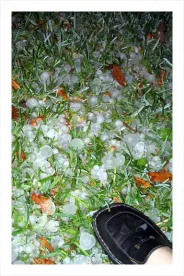In Kartman, et al. v. State Farm Mutual Auto. Ins. Co., et al., the Seventh Circuit held that an injunctive-relief class of homeowners was improperly certified because the requested injunction was neither “appropriate” nor “final,” as required by Federal Rule of Civil Procedure 23(b)(2). The plaintiffs, a group of homeowners who sustained damage to the roofs of their homes as a result of a severe hailstorm, filed a proposed class action against State Farm alleging breach of contract, bad faith, and unjust enrichment. The district court declined to certify a Rule 23(b)(3) damages class on the grounds that each plaintiff’s claim of underpayment required an individualized factual inquiry on the merits. However, the district court certified an injunctive-relief class under Rule 23(b)(2) to determine whether State Farm should be required to reinspect policyholders’ roofs using a “uniform and objective standard.” The district court defined the class as all policyholders who submitted claims resulting from the hailstorm and did not receive an entirely new roof.
On State Farm’s appeal, the Seventh Circuit first pointed out that while the plaintiffs advanced several legal theories, they had only one cognizable injury, namely the alleged underpayment of their insurance claims. The only remedy for their action was damages, for which, as the district court properly held, they were not entitled to Rule 23(b)(3) certification. The plaintiffs’ claim for injunctive relief created the illusion that in addition to State Farm’s duty to compensate insured homeowners, it had an independent duty to examine all hail-damaged roofs in accordance with a particular standard. The court found no such duty exists in either contract or tort. Further, while State Farm’s allegedly inconsistent approach to performing damage estimations may have been evidence of underpayment of some claims, it did not independently establish liability or support a separate injunctive remedy.
In analyzing whether injunctive-class certification was appropriate, the court noted that Rule 23(b)(2) requires that the contemplated injunctive relief be both “appropriate respecting the class as a whole” and “final.” The plaintiffs could not demonstrate the most basic requirement for an injunction—their alleged injury could have been fully remedied by money damages, and therefore, they had not suffered irreparable harm. Further, the court pointed out injunctive relief would have imposed an inappropriate hardship on State Farm. As defined by the district court, the class of plaintiffs potentially included policyholders who had been fully compensated even though they were not given new roofs, yet they would have been entitled to a reinspection. Given that the hailstorm generated over 7,000 claims, complying with such an injunction would have been immensely expensive. Finally, far from providing “final” relief, a class-wide roof reinspection would only have initiated thousands of individualized damage proceedings.





 />i
/>i
